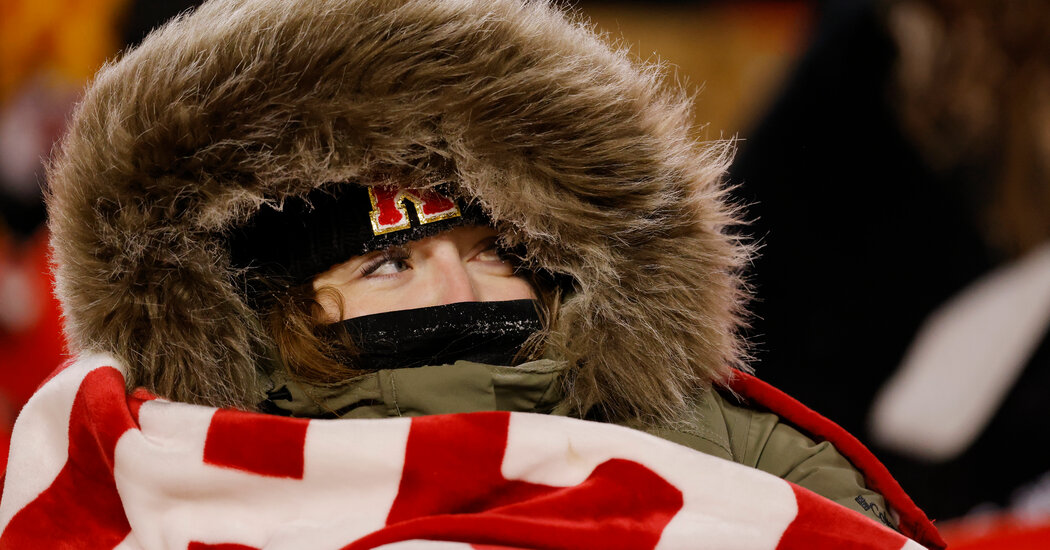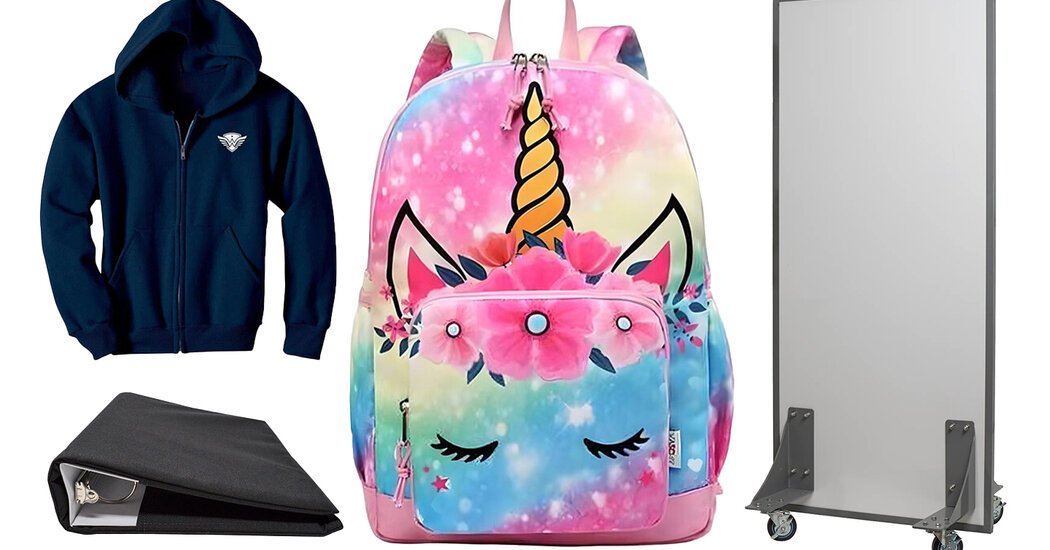Several fans of the Kansas City Chiefs who attended a playoff game on a bitterly cold January day in Missouri suffered frostbite that required amputations, according to the hospital that treated them.
Twelve people — including some football fans who were at Arrowhead Stadium on Jan. 13 — had to undergo amputations involving mostly fingers and toes, the hospital, Research Medical Center in Kansas City, said in a statement on Saturday.
The center said it treated dozens of patients who experienced frostbite during an 11-day cold snap. Not all of the patients who had amputations attended the Chiefs game. Some were people who worked outdoors in the extreme cold, the hospital said.
The exact number of fans who attended the game who had amputations was unclear. The hospital said there was some overlap among the fans and those who had also worked outdoors.
The hospital also noted that symptoms of frostbite can develop slowly, and that many of the frostbite patients it treated could not identify when their injuries occurred — when their pain, numbness and other symptoms began.
The hospital said it was a record number of frostbite patients since the burn center opened 11 years ago.
The National Weather Service had warned of dangerous temperatures that week, starting Jan. 6, with Arctic air spilling onto the Plains.
“Our specialized physicians and expert care team continue to treat and monitor patients’ healing to address long-term needs, and we expect more surgical procedures over the next two to four weeks as their injuries evolve,” the hospital said.
At kickoff of the game between the Kansas City Chiefs and the Miami Dolphins, temperatures hovered around minus 4 degrees, with a windchill of minus 26 degrees.
The helmet of Chiefs quarterback Patrick Mahomes cracked open during a tackle, a malfunction that the helmet’s manufacturer said was caused by the extreme cold.
Dr. Megan Garcia, the medical director of the hospital’s Grossman Burn Center, said in an interview with WDAF-TV that the Chiefs fans who came in with frostbite injuries had to schedule amputation surgeries after weeks of hospital treatment.
The treatment included rewarming the injured areas, applying antibiotics and thrombolytic therapy to dissolve blood clots and restore circulation, and hyperbaric oxygen therapy to boost oxygen to injured areas to reduce swelling.
Patients with frostbite experience “lifelong sensitivity and pain,” Dr. Garcia said, “and will always be more susceptible to frostbite in the future.”
During the cold snap in January, the medical center’s parent company posted information about frostbite on its website, warning that it can happen within minutes of skin exposure in freezing air, and in less time with wind chill.
People who work outside during the winter were especially vulnerable, the hospital said in its statement, as were people “attending football games, the elderly, pregnant women, and kids waiting at the bus stops to return to school.”
Frostbite happens in “extremely cold temperatures,” according to the Centers for Disease Control and Prevention, with injury often happening during the thawing process as vessels become damaged by clots and inflammation, strangling blood flow.
Although frostbite can happen anywhere on the body, it typically affects exposed areas like the nose, ears, cheeks, chin, fingers and toes.
Julie Loving, a physician assistant in the emergency department at Adirondack Medical Center in Saranac Lake, N.Y., said the hospital treats three to five patients for frostbite every winter.
After administering medication to expand blood vessels and generate new tissue, patients undergo a bone scan, she said.
“Sometimes it can take days, sometimes weeks, to make a decision that someone needs an amputation,” she said. “When someone presents at the E.R. that first day, there’s no way to predict.”
Instead, she added, members of the medical staff monitor how the tissue evolves. If the tissue does not regenerate, it becomes infected, and that is when amputation is necessary, she said.
Prolonged exposure to cold weather also puts people at risk of hypothermia, a sudden drop of body temperature, and lung diseases, such as pneumonia.
A representative for the Kansas City Chiefs did not immediately respond to a request for comment on Saturday.
Cold weather is often a feature at N.F.L. games, where fans bundle up but sometimes strip down, going shirtless to stand out in a crowd.
The coldest game recorded in N.F.L. history was the Ice Bowl of 1967, when the Green Bay Packers defeated the Dallas Cowboys in a New Year’s Eve game. Temperatures in Wisconsin were at minus 13 degrees at kickoff.







